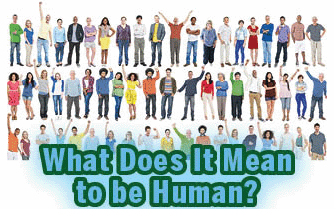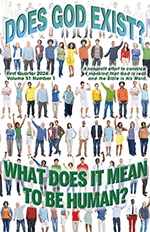Return to 1st Quarter 2024 articles.



“Do Insects Have Feelings and Consciousness?” is the title of an article by Avery Hurt in the February 3, 2023, issue of Discover magazine. If you put that title into your Web search engine, you will find a nearly endless series of articles reporting on studies and opinions of writers who claim the answer is “Yes.” The U.K. government recently recognized lobsters, crabs, and octopuses as sentient beings. The Merriam-Webster Dictionary says, the meaning of sentient is “capable of sensing or feeling: conscious of or responsive to the sensations of seeing, hearing, feeling, tasting, or smelling.”
In the past, most people considered humans the only sentient life, while Buddhism taught that all life was sentient and, therefore, of equal value. Periodicals such as Discover and Smithsonian have described studies showing bees and other insects doing things expressing emotions or play activities. This is a critical issue for everyone because if we classify every living thing as equal to humans in every way, then eating any animal is a cruel and barbaric act.
In Genesis 9:2-3 God tells Noah, “The fear and dread of you will fall upon all the beasts of the earth and all the birds of the air, upon every creature that moves along the ground, and upon all the fish of the sea; they are given into your hands. Everything that lives and moves will be food for you. Just as I gave you the green plants, I now give you everything.” In Acts 10:9-15, God gives Peter a vision of a large sheet coming down containing “all kinds of four-footed animals, as well as reptiles of the earth and birds of the air.” God told Peter to kill and eat these animals. When Peter objected, saying that he had never eaten anything unclean, God replied, “Do not call anything impure that God has made clean.” Western Christian churches have allowed their members to eat anything based on that passage, at least in part.
The key here is what it means to be human. When I took my first anthropology course, I was told that a human was any form that stood erect, walked on two legs, had a brain size of more than 1200 cc, and made and used tools. That definition did not stand the test of time when science found humans with brains smaller than 1200 cc. Studies have shown that many animals make tools and use them to secure food. Scientists found ancient apes that clearly traveled on two legs and left tracks, proving that they favored that mode of walking. In recent years, the definition of being human has included evidence of learning, demonstrations of advanced communication, and even being able to produce agriculture. The problem with all of these definitions is that we can always find animals that can, in some way, accomplish whatever criteria are chosen.

There is also the problem of anthropomorphizing the actions of animals. In simple terms, anthropomorphizing means interpreting animal behavior in a way that makes it look like they are doing what humans do. When a dog jumps up and down and vocally explodes with loud sounds, is that an expression of joy as it might be when I see a child or spouse after a long absence? Or is it more likely that the dog has learned that acting that way results in a treat or a feeding?
A well-known example of anthropomorphizing occurred when a gorilla named Koko was trained to do various human things, including learning and using the American Sign Language of the deaf. Koko was born in the San Francisco Zoo but spent all her life living with humans. When a young gorilla named Michael was introduced to Koko, he used human-looking gestures, encouraging Koko to come near him. Researchers have observed over 100 unique gorilla gestures, indicating a communication system peculiar to the gorillas. Communication obviously does not indicate humanness.
The biblical definition of a human is a being created in God's image. The biblical account of creation clearly distinguishes between man as an animal and man as a being created in God's image. In Genesis 2:7, the Bible says, “And the Lord God formed man from the dust of the ground and breathed into his nostrils the breath of life and man became a living being.” Notice that this is a physical description that might even be able to be duplicated someday by modern science. In Genesis 2:19, God brings all the other forms of life, which also “were formed out of the ground.” Obviously, being human has nothing to do with our bodies. We are made of the same stuff that makes up every other form of life.
We see the answer to what makes us human in Genesis 1:26-27. Notice that the statement of God in Genesis 1:26 is plural: “Let US make man in OUR image, after OUR likeness: … So God (elohim in Hebrew — a plural word) created man in his own image, in the image of God created he him, male and female created he them” (emphasis added). The word “create” in these verses is bara, a Hebrew word used to describe something that only God could do. The plural nature refers to that which makes us human — the Father referring to our intellect, the Son referring to our likeness to Jesus Christ, and the Spirit referring to our soul. Being human shows up in our likenesses to God. Being in God's image allows us to create art and music, to be able to have a concept of self, to worship, to feel guilt, to have sympathy and empathy, to be taught to think, and to have an agape form of love not based on sex or survival.

Because I am created in God's image, I can wonder at the beauty of a sunrise or sunset or the beauty of outer space. Because I am in God's image, I can see the beauty in the colors of birds and fish, which have nothing to do with their survival. Because of God's image, I can love other humans just because they are human — even if they are unkind to me. What makes me human is being created in God's image, allowing me to do these things no other living species can do. I can even appreciate the behavior of insects or fish or birds that I do not understand. Admiring God's creation is another way for me to praise God and enjoy the beauty and wisdom he has built into every nook and cranny of planet Earth.
Picture credits:
Cover photo: © Rawpixel.comi/Bigstock.com
© Rawpixel.comi/Bigstock.com
© kuran/Bigstock.com
© mexitographer/Bigstock.com
© Maridav/Bigstock.com
Scripture links/references are from BibleGateway.com. Unhighlighted scriptures can be looked up at their website.
